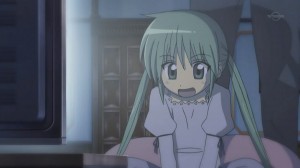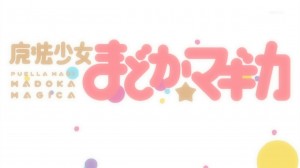
Tag: Wagnaria
Why YOU Should Watch Anime Openings.

While the changing of the anime seasons has already occurred, it only now dawns on me the importance of anime Openings and Endings toward the audience. While I have always loved these 1:30 intros and outros, it’s hard to believe so many people don’t understand the significance these seconds make on a potential viewer. The opening will often make or break the viewers opinion on the show, and whether or not the show is actually worth watching. While some people feel reading a synopsis or gathering opinions can give all the reason toward watching a series, the opening can give all the information necessary for judging that series.
I have determined, out of the various series I have had the pleasure of viewing, there are multiple types of openings, and often they will convey the following information. First, there is almost always a character role call. Second, there are subtle hints behind the progression of the plot and/or character development. Third, the opening will attempt to hook the viewer. Of course, there will always be exceptions, as some studios will travel off the path and create something unorthodox to catch the viewers off guard and in turn create more anticipation and hype for the show. I will demonstrate some examples at a later point.
First off, every anime opening consists of some sort of character role call. This doesn’t mean the opening will straight up say who is who, but instead features the main characters prevalently while putting minor and future characters in the shadows. Quite often one can watch the opening and see which character is going to have an impact on the story. For example, Code Geass R2 gives each important character their own segment. C.C appears in the beginning, taking up the whole frame, with Lelouch following in the next few scenes. Again, Lelouch takes up a large part of the frame, alluding to the fact that his existence in this series is important. The minor characters, or rather, the students, are often grouped together and don’t get their own scene. The antagonists are also given the spotlight, often paired up with their mechs giving the impression their battle scenes are going to severely impact the story. Of course, the main antagonist, Lelouch’s father, is given a whole scene to himself, taking up the biggest part of the scene of any character, only proving his power and dominance over the other characters. For one who has seen this series, there are almost limitless amounts of foreshadowing and allusions in this opening; I feel this opening perfectly fits the requirements of a good opening, and only improved the success of the series.

Second, as hinted above in my rant about Code Geass R2‘s opening, there lies near limitless amounts of foreshadowing, allusions, symbolism, and other elements to make the series appear more interesting. While this doesn’t occur in most harem, comedy, school life, and other anime of that nature, they still convey the general idea of what will happen. For example, Mayo Chiki! Doesn’t change up the story often nor does it need to present foreshadowing and imagery to hint at story progression. However, the opening tells the entire story of the series in one minute and thirty seconds. A butler, who hides the fact that she is a girl, becomes friends with the main character. Slowly she becomes friends with other girls who crowd around her due to her popularity, and while she does have her misfortune, as told by the ominous rain and imagery, her life becomes brighter after she turns the other way, and embraces her feminine side. While I explained the story imperfectly and crudely, the general idea and story is still there. Another example of a great opening has to be To Aru Majutsu no Index II‘s opening, See VisionS. I love this opening, as it portrays all the assets of a good opening so well, and I love this song. (I love Mami Kawada; I can’t help my feelings toward this OP) The song starts out slow, introducing the main characters and showing off some of the relations between them. It starts to pick up as soon as Touma, the main character, begins running. At first, he starts jogging, with the music picking up, just slightly, and showing off some side characters that have or will have some relevance to the plot. Then, it slows down again, with some stills of Touma and Index, before kicking off into the climax with Touma bolting off into a full-fledged run. This then changes into the intense battle sequences of the series, showing off some of the antagonists and finally stopping with Touma and Index facing each other with the heavenly sky in the background. I can’t help but see this opening and get pumped; the opening just works so well it’s scary.
Finally, the openings are designed to hook the viewer into watching the series. An action series will often use rock or heavy sounding songs to pump the viewer up and get them ready for the intense show that’s about to begin. Comedy series will often use happy and light-hearted music to relax the viewer or get them ready for the great laughs that are to be had. If the series wants to put their viewer in a good mood, they will use appropriate music and animation to convince the viewer that the series is calm, relaxing, and light-hearted. Working!, for example, contains a very popular bouncy track that makes anyone smile, and Higurashi uses a creepy, almost scary song for its opening. Mystery series commonly use Jazz to relax the viewer and heighten brain activity. It’s amazing how well thought out some openings can be. One of my favorite examples is Shakugan no Shana Second. Mami Kawada’s JOINT just screams “We’re back! Get ready, it’s time to rock your socks off and fight some Tomogara!” I just love the effort put toward these openings, and that includes not only the music, but the animation as well. Quite often some of the best animation is presented in the opening, mainly as a hook to attract new, potential viewers. It’s amazing how much detail is put toward these opening, and I find it disappointing when they are skipped over like worthless garbage.
For these reasons, I attempt to include the opening in every impression post I write. If you, the reader, don’t get my feelings through my writing, then I pray that the opening will give you the final push toward watching or not watching a series. The opening tells the story without wasting too much of your time, and quite often, is accurate in its attempt to tell the overall plot of the series. However, there is one series that I’ve yet to touch upon that I know someone is just waiting to use against me.

Madoka Magica. The one psychological series that plays by its own rules. One would simply tell me this: “Well, if you believe the opening can tell the whole story, watch Madoka’s opening and tell me the story from that!” Unfortunately, I cannot tell the story from its opening. The opening in that particular series is meant to throw the viewers off. The shock appeal would have been lost had the opening been like High School of the Dead or Full Metal Alchemist. However, they definitely added that truth behind the series with the ending. How many Magical Girl shows have you seen with a grim and dark ending like that? That right there tells the progression of Madoka Magica. Light-hearted at first glance, but once you delve deeper into the story, the dark origins are revealed and the truth becomes apparent. While I don’t believe the series was as great as everyone claims, the combination of both the opening and the ending are wonderful, and I applaud the efforts of Shaft for going through that ordeal.
There you have it. I didn’t touch of endings as much, mainly because their importance isn’t as apparent and significant as the openings, but I usually love them both equally. As anime evolves, so do its openings, and while the style may change, I feel the importance of these intros will always exist, and to do away with them would only hurt the industry. Next time you’re considering watching a series, check out the opening; you may find that it gives you the final push toward watching that series.
-Ace